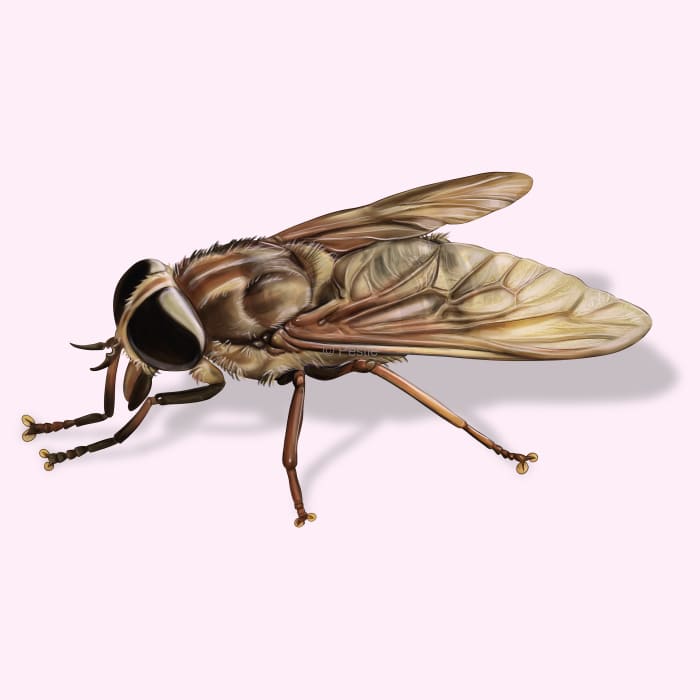How to identify and get rid of horse-flies

Don’t horse around with horse-flies
Biting and stinging insects can ruin any day spent outdoors. But when that biting insect is the size of an almond, it can strike fear into any person’s heart!
Horse-flies are known for their painful bites and relentless pursuit of blood. Larger and more aggressive than many other flying insects encountered by homeowners, these flies seem to throw their weight around and demand respect.
These flies cruise around in the sunlight, seeking out large mammals like cattle, horses, deer, or sometimes humans. They are attracted to their movement, colors, and the smell of carbon dioxide.
The females have powerful mouthparts that not only stab but also cut and slice into the skin of the host. Then, they lap up the blood that comes out of the wound. This cutting action into the skin is what makes their bite so painful.
Once the female has enough blood, she will begin developing her eggs. She will then lay up to 1000 eggs on a stone or plant near water. Once the eggs hatch, the larvae move into the water. There, they will prey on other aquatic insects, worms, or arthropods.
The adults are active during the day, especially when the sun is out, and the weather is hot, which makes outdoor activities their prime biting time. Though they are a nuisance, knowing how to manage their presence can help you reclaim your outdoor spaces.
How to identify horse-flies
Horse-flies are easily identified by their large size and the intense buzzing noise they make when flying. Their bodies are often gray or black, and they possess a distinctive set of shiny, often metallic-looking eyes. The wings of horse-flies can appear clear or have a smoky tint with possible dark markings.
How big are horse-flies?
Horse-flies can grow to be about 1 to 1.5 inches long.
Where do horse-flies live?
Horse-flies are found throughout the United States, particularly in rural and semi-rural areas near water sources like ponds, streams, and marshes.
How to get rid of horse-flies
Since horse-flies are such strong fliers, they can come from anywhere to find you. Here are a few ways you can keep horse-flies from biting you or your family.
Seal up your home: Use fine mesh screens on windows and doors to keep flies out.
Insect repellants: Use an insect repellant when you go outside during hot days.
Cover Up: Wear long sleeves and pants to protect yourself from bites when horse-fly activity is high.
Bug barrier: Establish and maintain a bug barrier with Pestie's DIY solution that keeps horse-flies from invading your indoor areas. A Pestie subscription gives you pro-grade protection all year long without dealing with sales reps, long contracts, or diluted store options.
Treat horse flies with Pestie
If you're still having trouble keeping horse flies away, the best option is to use a pro-grade, effective pest control solution like Pestie.
Pestie is a do-it-yourself pest control solution that's specially designed to keep horse flies and other pests away from your home.
With Pestie, you can rest easy knowing that your living space is protected and free of creepy crawlies. And the best part? It's designed for people, pets, and the planet, so you can say goodbye to harsh chemicals and hello to peace of mind!
- Save hundreds compared to traditional annual pest plans
- People, pet, and planet-friendly
- Pro-grade customized formulas
Quick facts
- Scientific name
Family - Tabanidae
- Other common names
Gadflies, Green-headed Flies, Green Flies, Deer Flies, Buffalo Flies, Moose Flies, Elephant Flies
How dangerous are Horse Flies?
Low danger risk
{
"message": "You should use slots with <ContentRenderer>",
"value": {},
"excerpt": false,
"tag": "div"
}







